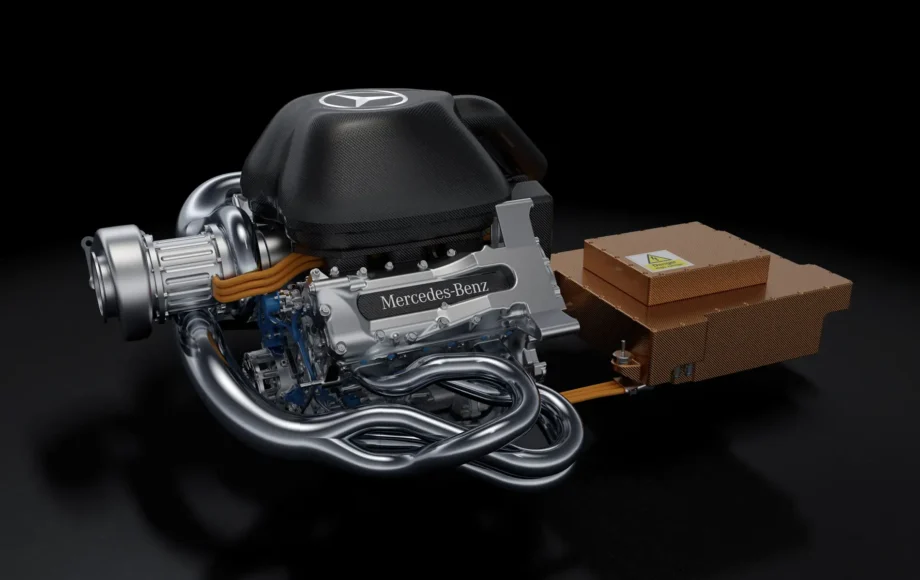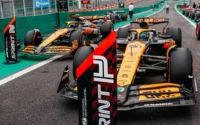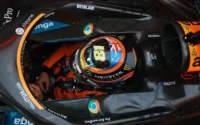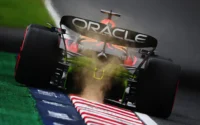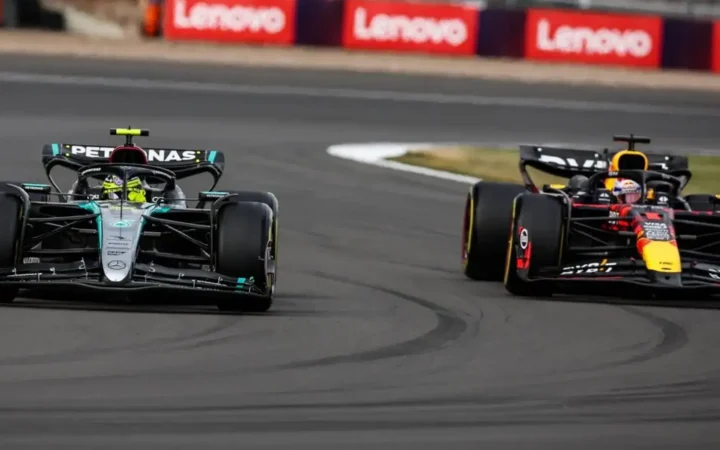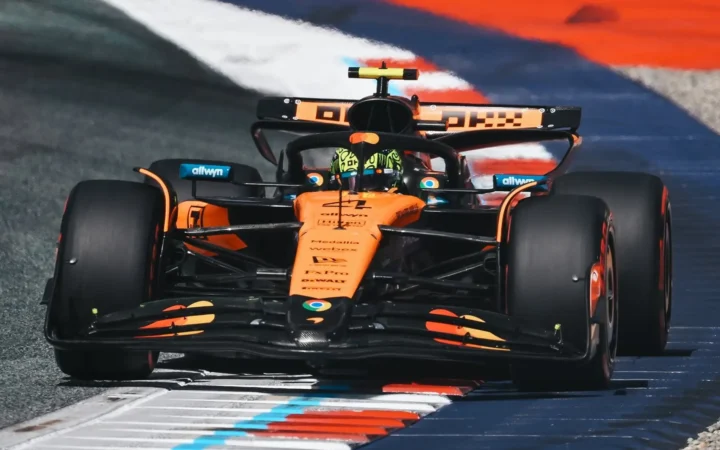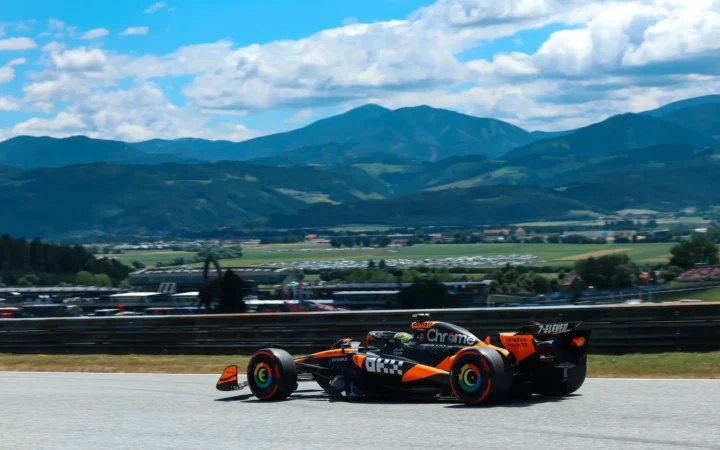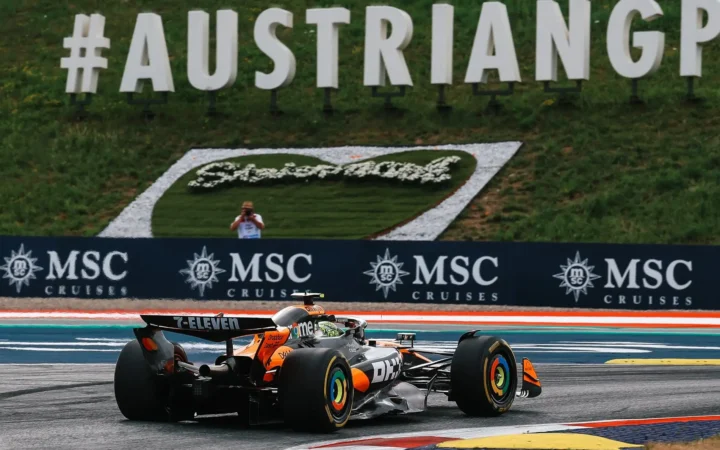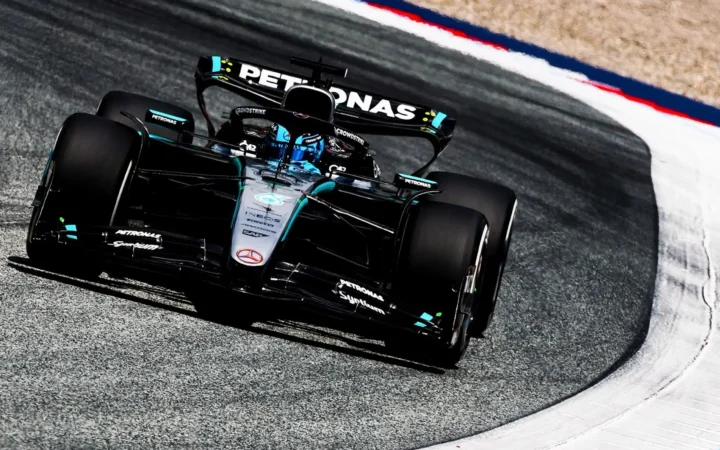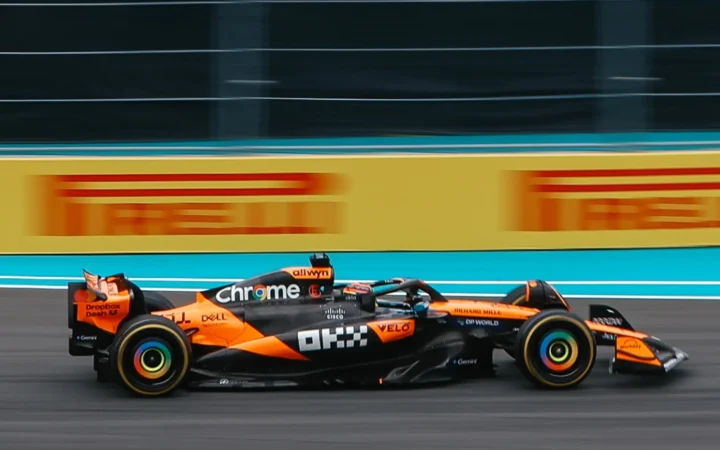Since the sport began, Formula 1 has been at the forefront of engineering, with teams always looking to find that extra edge over the rest of the grid. From roaring V12s to the current hybrid era, F1 engines have defined the sport and filtered into our everyday road cars.
Alongside aerodynamics and driver safety, F1 has evolved incredibly over the past 70+ years. And while the drivers are the brains of these speed machines and receive much of the spotlight, the heart of any F1 car has always been its engine.
What to know
- The origins of Formula 1 can be traced back to the early 20th century when motorsport was still in its infancy. Before World War II, the racing world was divided into various categories and engines.
- In the 1950s, the FIA gave us the DNA of what we know as F1 today, regulating cars and engines that were characterised by their large displacement and high cylinder counts.
- The 1960s saw mid-engined cars became the norm.
- During the 1980s, Formula 1 witnessed one of the most significant advancements in engine technology: turbocharging.
- Formula 1 transitioned back to naturally aspirated engines in the 1990s.
- In the early 2010s, F1 introduced hybrid power units, combining V6 turbocharged engines with energy recovery systems (ERS); this new era of Formula 1 has largely been dominated by two teams: Mercedes and Red Bull.
- As the 2025 Formula 1 season began, it became the final year for the power unit configuration that debuted in 2014. A new configuration would be introduced in 2026, eliminating the MGU-H but enhancing the MGU-K’s power output.
Pre-Formula 1
Before there was a unifying body or championship for F1, open-wheel racing was divided into various categories, all with varying rules, cars, and engines that were typically large and naturally aspirated or with the aid of superchargers. The power output of these engines was modest, considering their large displacement, compared to today’s standards, although they were incredibly powerful for their time.
The founding teams, some of which are synonymous with the sport even today, included Alfa Romeo and Mercedes. Between 1938 and 1951, Alfa Romeo was incredibly successful, fielding cars like the Alfa Romeo 158/159, also known as the Alfetta (Little Alfa in Italian), featuring a supercharged 1.5-litre inline-eight engine with around 200 horsepower. It dominated pre-war racing and the first two seasons of the official FIA World Championship of Drivers in 1950 and 1951. But even after these great early successes, the brand withdrew as an official team and would continue to support others by supplying their engines in later years.
Mercedes-Benz also featured early in Grand Prix racing with its W125 in 1937. This monstrous 5.7-litre supercharged inline-eight engine produced an impressive 595 horsepower in race trim, setting speed records that stood for decades. However, in 1938, rules changed, and the engine capacity for a supercharged Grand Prix car was limited to 3000cc. The Mercedes-Benz W154 replaced the W125.
1950s Early F1 Engines
In the 1950s, as the FIA founded the Formula 1 we know today, engines were known for their high cylinder counts. These V12 monsters were typically made of cast iron and were either naturally aspirated or featured superchargers to gain as much performance from them as possible.
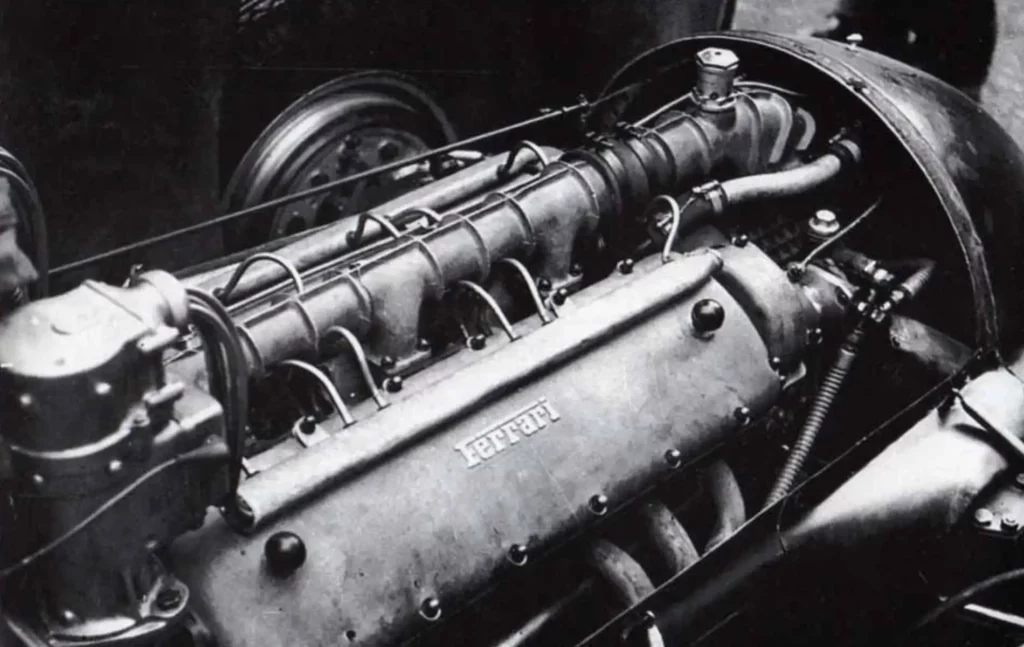
V12 Engines
Teams like Ferrari and the Ferrari 125 F1 in 1950 raced with a naturally aspirated 1.5-litre V12 engine, but with little success, switched to the Ferrari 375 F1, a naturally aspirated 4.5-litre V12.
Other successful teams of the era saw Maserati and the 250F featuring a 2.5-litre inline-six engine from 1954 to 1956, with the introduction of a 2.5-litre V12 in 1957. The Maserati cars were so powerful and reliable that they helped Juan Manuel Fangio win two of his five Drivers’ Championships.
Front-engined Cars
Another characteristic of Formula 1 at this time was that all cars were front-engined, with the engine positioned ahead of the driver rather than behind, like we see in F1 today. This layout would eventually be phased out as technology and aero knowledge grew. However, that didn’t stop teams from attempting to improve the limited weight distribution and handling capabilities that a front-engined car causes.
The Lancia D50 from 1954–1955 was one of these and became the first car to feature a rear-mounted transmission designed to improve and balance the weight distribution away from the heavier front-engine layout.
Other notable front-engined cars of the 1950s included the Vanwall VW5, which, in 1957, became the first British car to win a Formula 1 World Championship race. Sir Stirling Moss and Tony Brooks shared the victory at the British Grand Prix at Aintree.
Mid-engined Cars
While F1 cars have never been regulated as ‘rear-engined,’ they do sit behind the driver. The switch from front-engine RWD to mid-engine RWD was for weight distribution, handling, and packaging. It was first seen in the 1958 Argentine Grand Prix with the Cooper T43 driven by Stirling Moss, who trounced the field. Come the 1959 season, everyone raced a mid-engined RWD car.
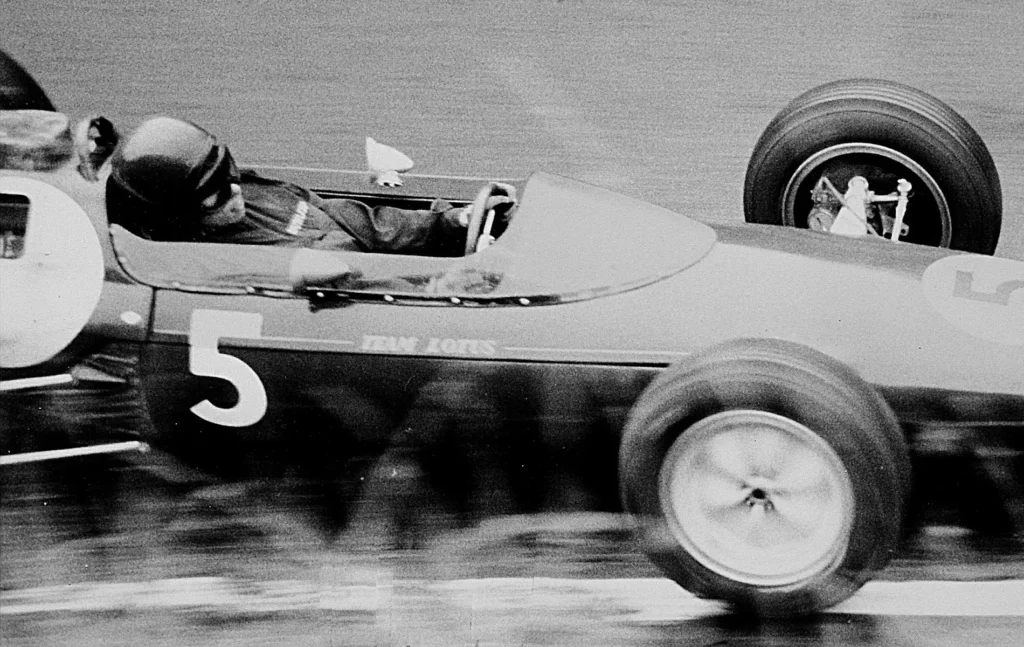
After the sports’ first decade and creeping into the 1960s and 1970s, Formula 1 engines and the thinking behind them began to undergo significant changes. V8 and V10 engines became the norm, adding a new level of performance and understanding of engine technology. Smaller and lighter than their V12 predecessors, these engines allowed teams to build the car around the engine and improve its handling and aerodynamics. These newer engines could also rev much higher, produce more power, and become more efficient and reliable, making them the engines of choice for many teams.
This time also sprouted some British home-grown powerhouses of F1 with the Copper and Lotus teams. The Copper T51 of 1959 was the first mid-engined car to win the F1 World Championship with Jack Brabham. Unlike the engine freezes of today, the T51 featured many engines from the 2.5-litre 4-cylinder engine that Cooper and Lotus had commissioned Coventry Climax to build specifically for their rear-engined machines to Ferrari-derived 2.5-litre units.
Lotus would go on to produce more successful mid-engined cars, including the Lotus 25 in 1962. Designed by Colin Chapman, the 25 was a lightweight and innovative car featuring the first fully stressed monocoque chassis in F1. In the hands of Jim Clark, it took 14 World Championship Grand Prix wins and took him on to win the 1963 World Championship title. Its last World Championship win was at the 1965 French Grand Prix. It featured a 1.5-litre naturally aspirated Coventry Climax V8 engine.
As the 1960s decade ended, Ford would develop one of the most successful engines in F1 history, powering cars to numerous World Championships with the Cosworth DFV (Double Four Valve) V8 engine. So successful was the engine that DFVs were used by almost every team in F1 from the late 1960s to the mid-1980s, with the exception of Ferrari, Alfa Romeo, Renault, BRM and Matra,
However, it wasn’t until the 1980s that we witnessed one of the most significant advancements in F1 engine technology: turbocharging.
1980s Turbocharged Engines
Turbocharged engines began pushing the power output of engines beyond anything F1 had seen before with exponential increases in speed.
In its simplest explanation, turbocharging uses the energy from the exhaust gases to power a turbine attached to the engine. The turbine compresses the incoming air to create a higher density of air entering the engine’s cylinders. This means that more fuel is burned, which significantly increases power output.
The turbo engines of the late 1970s and 1980s were smaller than their predecessors but produced immense power. The Renault RS01 of 1977 was the first F1 car to use a turbocharged engine. Despite considerable reliability issues, earning the nickname ‘the yellow teapot’ for blowing up so often, it had showcased the potential of turbocharging.
In 1981, the Ferrari 126C, powered by a turbocharged 1.5-litre V6 engine, producing around 600 bhp in qualifying trim and detuned to 550 bhp in race trim, replaced the previous V12 unit Ferrari raced with. The engine and car built around it showcased how turbocharged power units were the future, reducing weight and improving aero; it propelled the team to win back-to-back constructors in 1982 and 1983 with an evolution of the first engine and chassis design.
More on F1 Qualifying
Other teams took note, and the McLaren MP4/2 of 1984 was powered by a TAG-Porsche turbo engine. It dominated the 1984 season, winning 12 out of 16 races. Williams also found great success with the FW11 in 1986 and 1987, powered by a turbo Honda engine, with drivers Nelson Piquet and Nigel Mansell winning back-to-back Constructors’ Championships for the team.
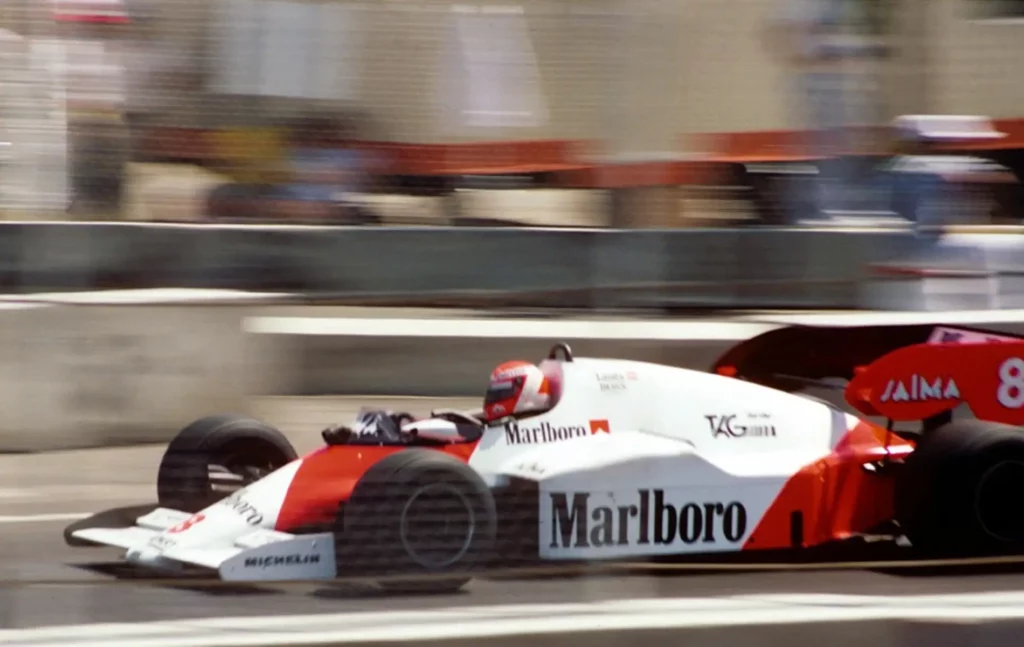
As the understanding of turbocharging evolved, V6 turbos of the 1980s began producing up to 1,200 to 1,500 horsepower, propelling cars and drivers to mind-boggling speeds. However, turbocharging also brings challenges, such as turbo lag. This is the delay in power delivery caused by the time it takes for the turbocharger to spool up and provide boost pressure. Drivers had to learn to manage this lag, anticipating when the power surge would kick in and adapting their driving style. Turbo lag also increased fuel consumption, which affected race strategies and the need for more frequent pit stops. It wasn’t uncommon for drivers to stop on the final and cool down laps after running out of fuel.
Despite these challenges, turbocharging laid the groundwork for the hybrid technology we see in Formula 1 today. The current generation combines turbocharged V6 internal combustion engines with hybrid electric power units, a technology that has found its way back to the road cars we drive every day.
1990s Naturally Aspirated Engines
Turbochargers were banned from the 1989 Formula 1 season because they were becoming so powerful; the FIA and Formula 1 were concerned over the safety of the sport, and introduced a 3.5 L naturally aspirated engine rule, giving way to a mixture of high-revving V10s, V8s and V12s.
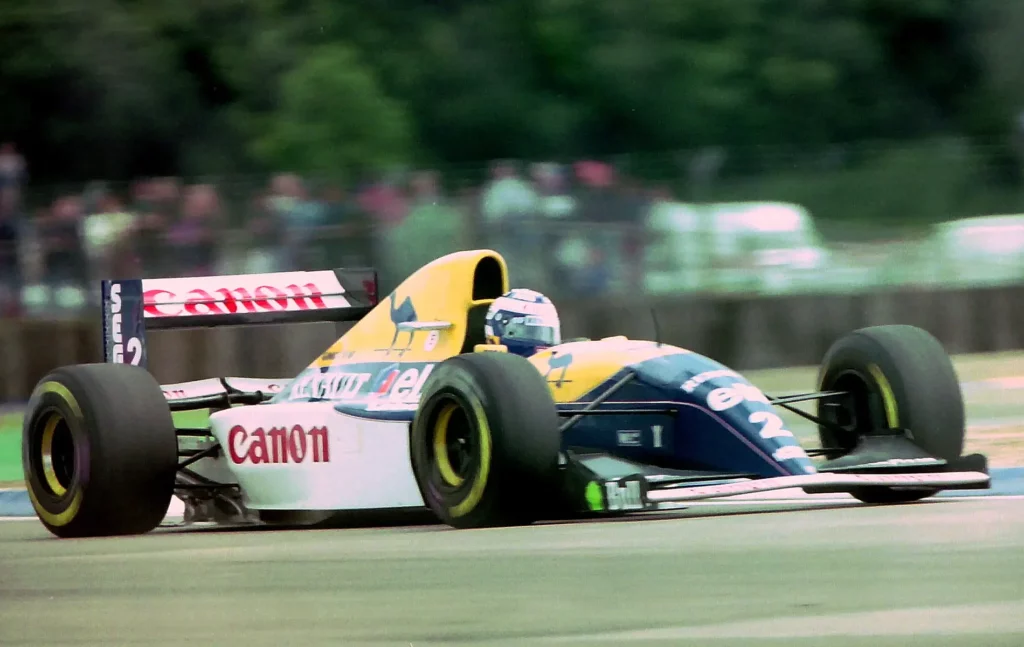
Williams, alongside the dominant V10 Mclaren-Honda’s, both continued to dominate the sport and in the hands of Alain Prost, in the Williams FW14 of 1991, powered by a Renault V10 engine, Prost secured his fourth and final Drivers’ World Championship.
By the end of the 1994 season, Ferrari’s Tipo 043 V12 was putting out around 850 bhp, becoming, to date, the most powerful naturally-aspirated V12 engine ever used in Formula 1. It was also the most powerful engine of the 3.5-litre engine regulation era, before the FIA and Formula 1 reduced the engine capacity to 3 litres in 1995.
The late 1990s and early 2000s V10 engines continued to dominate the grid, and the rivalry between Michael Schumacher for Ferrari and Mika Hakkinen for McLaren saw an intense battle that saw both drivers and teams share an impressive tally of Drivers’ and Constructors’ titles from 1999 to 2004.
It wasn’t until 2005 that the Renault R25 and Renault’s own V10 broke the back of these two teams, with Fernando Alonso taking the Drivers’ title and Renault their first Constructors’ title.
In 2006, Formula 1 made a bid to make F1 more efficient, introducing 2.4 L V8 power units. Renault, off the back of their 2005 success and despite the engine rule change, dominated the 2006 season with the R26, powered by a 2.4-litre V8 engine that allowed Fernando Alonso to secure his second consecutive World Championship. Despite less success than its predecessor, the 2007 R27 continued to show Renault’s strength with V8 engines. The team finished third in the championship.
2010s Hybrid Technology
In 2014, Formula 1 adopted hybrid power units that combine a 1.6-litre turbocharged V6 internal combustion engine with an electric system that includes a battery, motor generator units, and control electronics. This combination increases engine efficiency, reduces emissions, and improves power delivery.
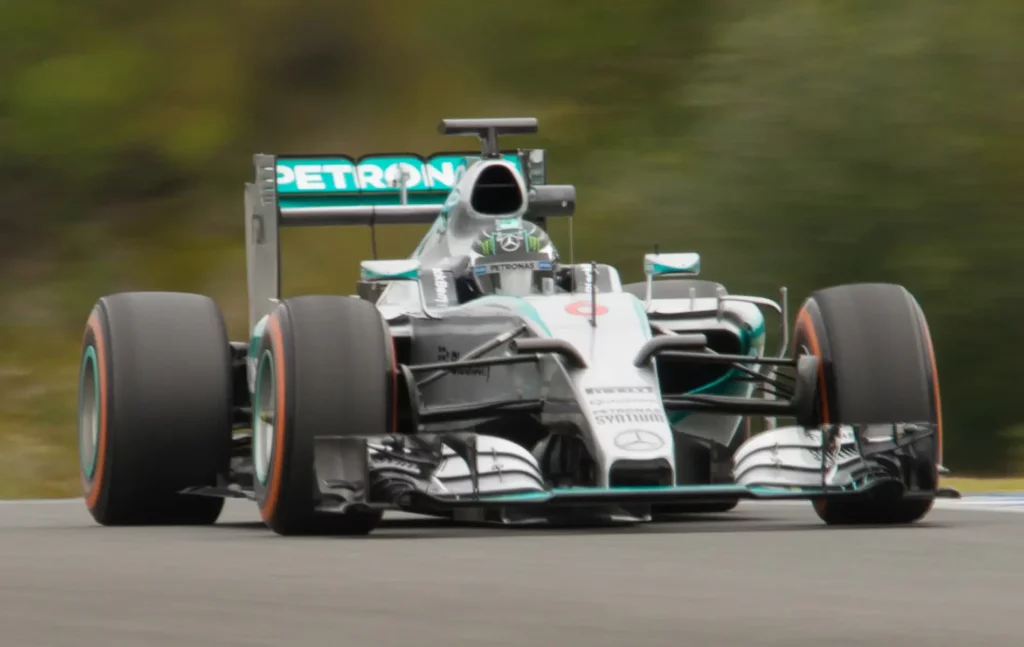
The system is designed to recover and store energy that would otherwise be lost during braking. The stored energy is then used to boost power in strategic situations, such as during overtaking or defending against an overtake. This part of the system is called the Energy Recovery System (ERS).
As in any era when there is a major rule change, the dominance of a team or an engine supplier can change. Since 2014, there have been two teams, Mercedes and Red Bull (Honda), who have dominated the grid.
Mercedes‘ 2014 W05 marked the beginning of a dominant era, thanks to its powerful and efficient power unit. They would go on to win no less than eight consecutive Constructors’ Championships and seven consecutive Drivers’ titles with Lewis Hamilton and Nico Rosberg, only being stopped by Red Bull, which snatched away the Drivers’ title in 2021 with Max Verstappen in the RB16B and the Constructor’s title in 2022.
Future Of F1 Engines
For the 2026 F1 World Championship, the FIA and Formula 1 will introduce more sweeping regulation changes that will affect F1 engines. The goal is to increase the sport’s sustainability and reduce its carbon footprint.
2026 F1 Engine Rule Changes
One key directive will require all engines to run on fully sustainable fuels. By developing and promoting the use of 100% sustainable fuels, Formula 1 aims to reduce its carbon emissions. Like other technology, it’s very likely we’ll see this filter down into our road-going cars. The sustainable fuel will be produced from non-food sources, waste, and even out of the atmosphere.
The existing 1.6-litre V6 turbocharged internal combustion engine will remain, but the MGU-K (Kinetic Motor Generator Unit) will change significantly by nearly tripling the electrical power output of the current hybrid elements.
By storing the additional braking energy that would otherwise go to waste, the goal is to boost the MGU-K’s power production to approximately 350 kilowatts (kW) by 2026. This represents a substantial increase from the current 120 kW of energy generated by the MGU-K and MGU-H.
Environmental Responsibilities
Hybrid technology has undoubtedly had a positive impact on fuel efficiency in Formula 1, reduced the sport’s environmental impact, and changed how teams approach race strategies. It’s also had an impact on road car technology. Global car manufacturers are adopting the knowledge and expertise gained from Formula 1 to create more efficient and sustainable cars.
It doesn’t end there. The sport is pursuing 100% sustainable fuels, reducing waste, increasing recycling of items like carbon fibre and tyres, and promoting sustainable practices throughout the entire paddock, from broadcasting to the construction of cars, trackside buildings and how a race weekend is run.
As a leading hotbed of technology and innovation, it’s hard not to see why F1 can’t become net-zero by 2030, as they hope to.
Seen in:

